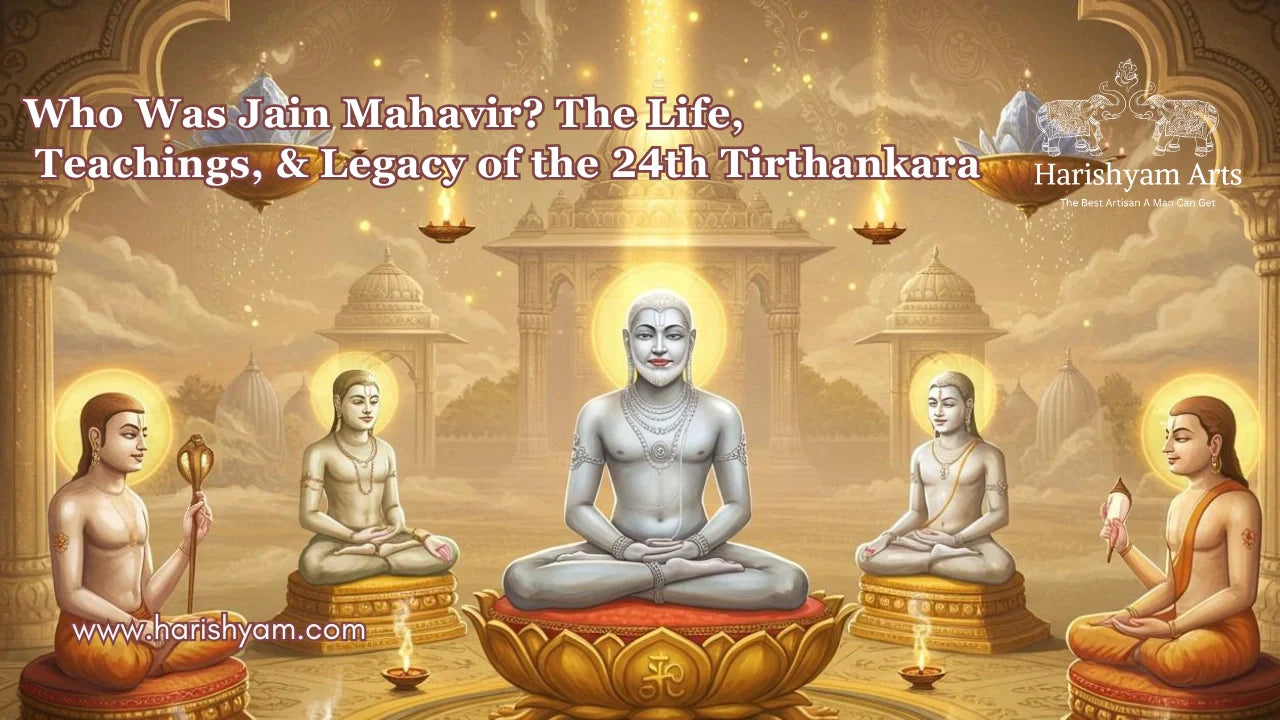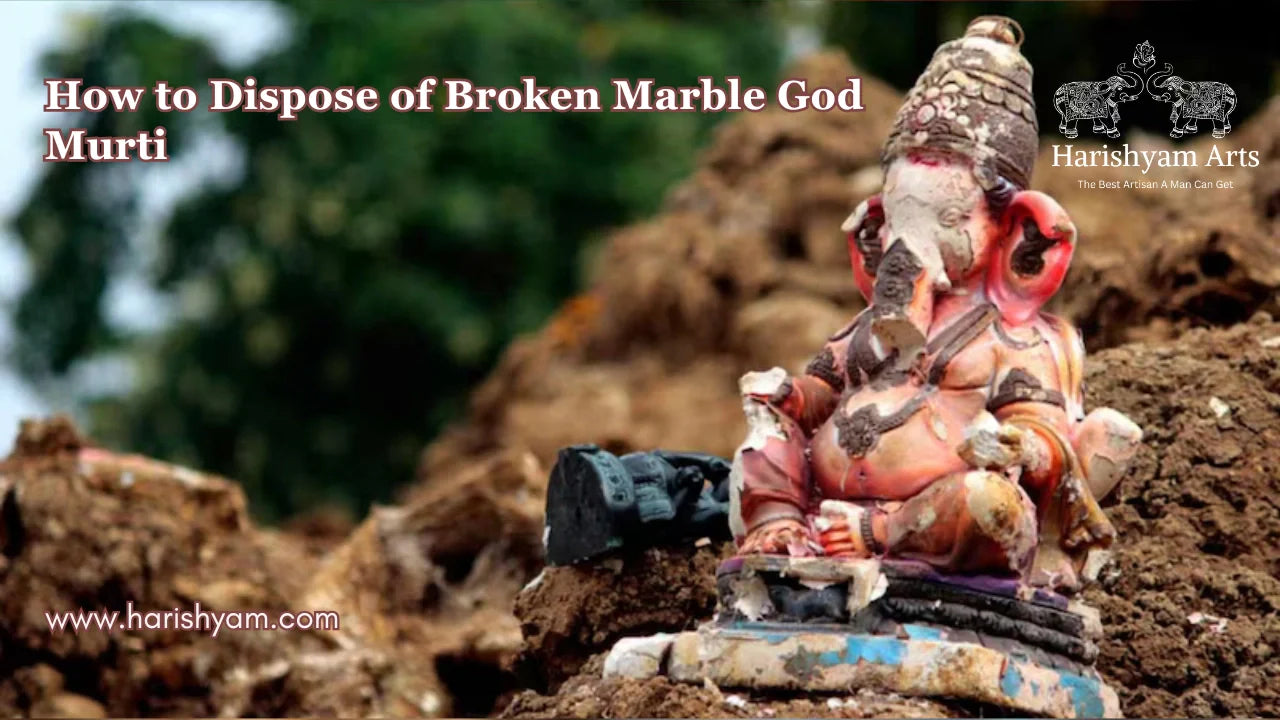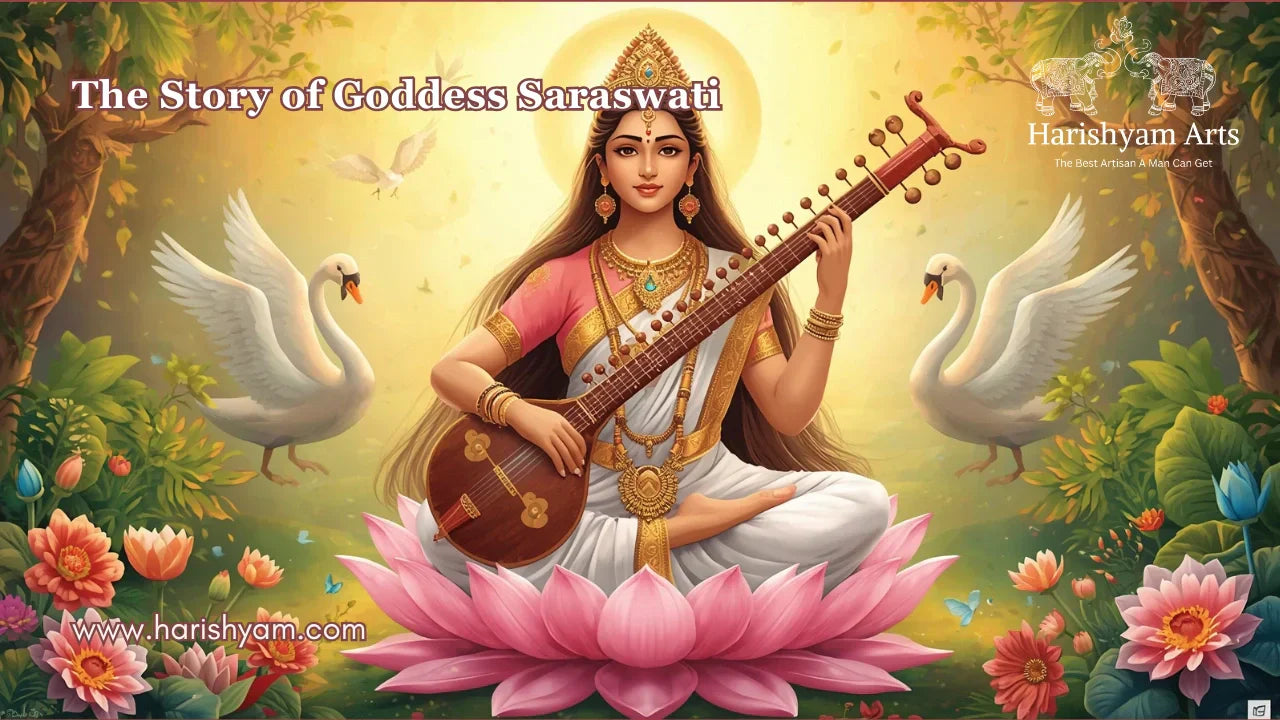Harishyam Arts Blog
Maa Parvati 108 Names in Sanskrit and English: Their Significance, Meaning, and Mantra Power
By Lakshay Sharma | On 17 November, 2025 | Views

The Divine Essence of Maa Parvati
Maa Parvati, the consort of Lord Shiva, embodies strength, compassion, and divine grace. As the Universal Mother, she represents love, fertility, devotion, and power. Her 108 names reflect her many forms—from Annapurna, the Goddess of nourishment, to Durga, the fierce protector. Chanting these sacred names brings peace, wisdom, and prosperity. Each name carries unique spiritual vibrations that purify the mind and heart. Understanding and reciting Maa Parvati’s 108 names helps devotees connect deeply with her energy, invoking blessings for harmony, courage, and spiritual awakening in every aspect of life.
The Significance of the 108 Names
The number 108 holds profound spiritual significance in Hinduism. It symbolizes completeness and the cosmic connection between the soul and the universe. Each of Maa Parvati’s 108 names reflects one of her divine attributes—beauty, strength, motherhood, and compassion. Chanting or meditating upon these names aligns your energy with her divine frequency. It removes negativity, fosters inner peace, and strengthens devotion. Devotees believe that reciting all 108 names with pure faith can help fulfill desires, protect against obstacles, and awaken the Shakti (divine feminine energy) within the heart and mind.
108 Names of Maa Parvati (Sanskrit and English with Meaning)
-
पार्वती (Parvati) – Daughter of the mountains
-
गौरी (Gauri) – The radiant and fair one
-
दुर्गा (Durga) – The invincible Goddess
-
काली (Kali) – The fierce and powerful one
-
अन्नपूर्णा (Annapurna) – Giver of nourishment and food
-
भवानी (Bhavani) – Source of creation and existence
-
उमा (Uma) – The peaceful mother
-
गिरिजा (Girija) – Born of the Himalayas
-
हिमवती (Himavati) – Daughter of the Himalayas
-
हरप्रिय (Harapriya) – Beloved of Lord Shiva
-
त्रिपुरा सुंदरी (Tripura Sundari) – Beauty of the three worlds
-
शक्ति (Shakti) – Divine feminine power
-
जगन्माता (Jaganmata) – Mother of the universe
-
अम्बिका (Ambika) – The compassionate mother
-
सर्वमङ्गला (Sarvamangala) – The all-auspicious one
-
चण्डिका (Chandika) – Fierce protector of righteousness
-
भवप्रिया (Bhavapriya) – Beloved of Lord Bhava (Shiva)
-
शिवा (Shiva) – The auspicious and pure one
-
देवी (Devi) – The divine goddess
-
महेश्वरी (Maheshwari) – Consort of Mahesh (Shiva)
-
ललिता (Lalita) – Playful and graceful
-
सती (Sati) – The virtuous and devoted wife
-
भवानीश्वरी (Bhavaneshwari) – Queen of the universe
-
कामाक्षी (Kamakshi) – One with eyes full of love
-
त्रिनेत्रा (Trinetra) – The three-eyed goddess
-
महादेवी (Mahadevi) – Supreme among goddesses
-
शैलजा (Shailaja) – Daughter of the mountains
-
शैलपुत्री (Shailaputri) – First form of Navadurga
-
योगमाया (Yogamaya) – Divine illusion of yoga
-
तपस्विनी (Tapasvini) – The ascetic one
-
ब्रह्मचारिणी (Brahmacharini) – Practicer of penance
-
कात्यायनी (Katyayani) – Born in sage Katyayan’s home
-
महिषासुरमर्दिनी (Mahishasura Mardini) – Slayer of demon Mahishasura
-
शंभवी (Shambhavi) – Consort of Lord Shambhu
-
कामधेनु (Kamadhenu) – Wish-fulfilling mother
-
चन्द्रमुखी (Chandramukhi) – One with a moon-like face
-
ललिताम्बा (Lalitamba) – The graceful mother
-
त्रिलोचना (Trilochana) – The three-eyed goddess
-
जगदम्बा (Jagadamba) – Mother of the world
-
महागौरी (Mahagauri) – The extremely fair goddess
-
मातृका (Matrika) – The divine mother
-
आर्या (Aarya) – The noble and revered one
-
भद्रकाली (Bhadrakali) – The auspicious fierce goddess
-
श्रीमती (Shrimati) – The glorious one
-
चामुंडा (Chamunda) – Slayer of demons Chanda and Munda
-
ईश्वरी (Ishwari) – Supreme goddess
-
अंबालिका (Ambalika) – The tender mother
-
महालक्ष्मी (Mahalakshmi) – Goddess of prosperity
-
महाकाली (Mahakali) – The great destroyer of evil
-
सवित्री (Savitri) – The life-giving power
-
विद्याधारी (Vidyadhari) – Bestower of knowledge
-
वाग्देवी (Vagdevi) – Goddess of speech
-
भूमिदेवी (Bhumidevi) – Goddess of the earth
-
शांता (Shanta) – The peaceful one
-
त्रिपुरभैरवी (Tripura Bhairavi) – Fierce mother of the three worlds
-
भवशंकरवल्लभा (Bhavashankar Vallabha) – Beloved of Lord Shankar
-
अष्टभुजा (Ashtabhuja) – Eight-armed goddess
-
कालरात्रि (Kalaratri) – Dark night of destruction
-
दुर्गेश्वरी (Durgeshwari) – Queen of fortresses
-
मातंगी (Matangi) – Goddess of wisdom and arts
-
भुवनेश्वरी (Bhuvaneshwari) – Ruler of the worlds
-
भवमोचनी (Bhavamochani) – Liberator from worldly bonds
-
पद्मावती (Padmavati) – One seated on a lotus
-
मीनाक्षी (Meenakshi) – Fish-eyed goddess
-
हेमवती (Hemavati) – Golden complexioned one
-
पारिजातप्रिय (Parijatapriya) – Lover of the divine flower
-
गौरीदेवी (Gauridevi) – The bright goddess
-
भवभयहरिणी (Bhavabhayaharini) – Remover of worldly fears
-
मोक्षदायिनी (Mokshadayini) – Granter of liberation
-
हरशक्ति (Harashakti) – Power of Lord Shiva
-
वामेश्वरी (Vameshwari) – Goddess of the left side
-
रुद्राणी (Rudrani) – Wife of Rudra (Shiva)
-
सृष्टिकर्त्री (Srishtikartri) – Creator of the universe
-
पालनकर्त्री (Palanakartri) – Protector of all beings
-
संहारकर्त्री (Samharkartri) – Destroyer of evil
-
त्रिनेत्रेश्वरी (Trinetreshwari) – Three-eyed divine mother
-
विश्वेश्वरी (Vishweshwari) – Ruler of the cosmos
-
नित्यकला (Nityakala) – Eternal energy
-
सर्वशक्ति (Sarvashakti) – Possessor of all powers
-
आत्मविद्या (Atmavidya) – Knowledge of the self
-
रजस्वला (Rajasvala) – Controller of creation energy
-
भवदात्री (Bhavadatri) – Supporter of life
-
यशस्विनी (Yashasvini) – Bestower of fame
-
रत्नगर्भा (Ratnagarbha) – Womb of precious jewels
-
शिवानुगा (Shivanuga) – Follower of Shiva’s path
-
सुलोचना (Sulochana) – Beautiful-eyed goddess
-
करुणामयी (Karunamayi) – Full of compassion
-
जयप्रदा (Jayaprada) – Giver of victory
-
शारदा (Sharada) – Goddess of learning
-
त्रिलोकसुंदरी (Triloka Sundari) – Beauty of the three worlds
-
आनंदमयी (Anandamayi) – Full of bliss
-
दयानिधि (Dayanidhi) – Ocean of mercy
-
मातृरूपा (Matrirupa) – Motherly in form
-
वैष्णवी (Vaishnavi) – Supporter of Vishnu’s energy
-
सृष्टिरूपा (Srishtirupa) – Embodiment of creation
-
अच्युतप्रिया (Achyutapriya) – Beloved of the eternal one
-
सुरेश्वरी (Sureshwari) – Queen of the gods
-
हिरण्यमयी (Hiranyamayi) – Golden and radiant
-
भवदात्री (Bhavadatri) – Sustainer of existence
-
तारिणी (Taarini) – Savior from troubles
-
शिवकामिनी (Shivakamini) – Lover of Lord Shiva
-
चन्द्रलेखा (Chandralekha) – Crescent moon adorned
-
नन्दिनी (Nandini) – Source of joy
-
महेश्वरप्रिया (Maheshwarapriya) – Beloved of Maheshwara
-
अर्धनारीश्वरी (Ardhanarishwari) – Half of Lord Shiva
-
ब्रह्माणी (Brahmani) – Power of Brahma
-
त्रिनेत्रधारिणी (Trinetra Dharini) – Bearer of three eyes
-
शिवशक्ति (Shivashakti) – The united power of Shiva and Shakti
Chanting Tip:
Chant these names daily or on Mondays and Fridays to invite blessings, strength, and peace. Use a 108-bead mala to complete one full recitation cycle with devotion and concentration.
The Spiritual Meaning Behind Each Name
Each of Maa Parvati’s names represents a divine lesson for life. “Annapurna” teaches the joy of giving, “Durga” inspires courage to overcome evil, and “Uma” symbolizes peace and restraint. These names aren’t just titles—they’re spiritual vibrations carrying timeless wisdom. Chanting them reminds devotees of divine virtues: patience, compassion, strength, and purity. When meditated upon, these names awaken the feminine power within, harmonizing body, mind, and soul. Understanding their deeper meanings transforms worship into a path of inner growth and self-realization guided by the nurturing energy of the Mother Goddess.
Chanting Maa Parvati’s 108 Names: The Mantra Power
Reciting Maa Parvati’s 108 names is considered a sacred sadhana that connects devotees directly with her divine energy. Each name acts as a mantra, generating spiritual vibrations that cleanse the aura and calm the mind. The practice is best performed during dawn or dusk with devotion and concentration. Chanting daily helps attract positivity, strengthens relationships, and promotes prosperity. It also awakens Shakti—the creative energy within every being. The sound of these mantras creates harmony between body and soul, allowing the devotee to feel Maa Parvati’s divine presence and grace.
How to Perform the 108 Name Chanting Ritual
To chant Maa Parvati’s 108 names, begin by purifying the space and lighting a diya. Offer flowers, kumkum, and incense before her idol or photo. Sit in a peaceful position and use a rudraksha or lotus mala to count the names. Focus on her image while reciting each name with faith and gratitude. End the chanting with a small prayer for peace and well-being. Performing this ritual regularly invokes Maa Parvati’s blessings, purifies the heart, and helps devotees align with divine energy, creating a deep sense of inner balance and joy.
The Benefits of Remembering Maa Parvati’s Names
Chanting Maa Parvati’s names brings spiritual, emotional, and material blessings. It removes negative thoughts, promotes inner strength, and enhances family harmony. Devotees experience increased confidence, clarity, and protection from misfortunes. The vibrations of her names purify the mind and fill life with divine energy. Reciting these names daily with devotion fosters humility and love. Maa Parvati’s energy blesses those seeking peace, marital bliss, and prosperity. Her divine grace nurtures the heart and soul, inspiring devotees to lead a virtuous, mindful, and spiritually fulfilling life.
FAQs
Q1. Why does Maa Parvati have 108 names?
Ans: Maa Parvati’s 108 names represent her various forms, powers, and divine qualities. Each name holds symbolic meaning, reflecting aspects like strength, beauty, and motherhood. Chanting all 108 connects devotees to her cosmic energy and grants blessings of prosperity, protection, and spiritual wisdom.
Q2. When should I chant Maa Parvati’s 108 names?
Ans: Chant her names during early morning or evening hours, ideally after bathing and lighting a diya. Fridays, Navratri, and Mondays are especially auspicious. Consistent chanting with devotion purifies thoughts, strengthens focus, and brings peace, divine blessings, and emotional balance into daily life.
Q3. Can I chant Maa Parvati’s names without a mala?
Ans: Yes. While using a mala helps maintain count and focus, it’s not mandatory. What matters most is pure devotion and sincerity. Whether with or without a mala, heartfelt chanting of Maa Parvati’s 108 names invites her divine presence and spiritual protection into your home.
Q4. What are the benefits of chanting Maa Parvati’s names?
Ans: Chanting Maa Parvati’s names enhances inner peace, courage, and confidence. It removes negativity, attracts positive energy, and strengthens relationships. Devotees experience emotional healing, prosperity, and divine protection. Regular chanting harmonizes the mind and heart, awakening the inner Shakti or feminine spiritual power within every soul.
Q5. Does Harishyam Arts offer Maa Parvati idols?
Ans: Yes. Harishyam Arts offers beautifully handcrafted Maa Parvati idols in marble, brass, and wood. Each piece reflects fine artistry and devotion, perfect for temples or home mandirs. Our creations help devotees connect with divine energy, bringing beauty, spirituality, and serenity into sacred spaces.
Conclusion: Embracing the Divine Mother’s Grace
Maa Parvati’s 108 names are more than mantras—they are pathways to divine connection. Each name carries the essence of the Goddess’s limitless compassion and power. Reciting them helps dissolve fears, heal emotional wounds, and awaken inner strength. In every chant, devotees experience the nurturing love of the Divine Mother. By honoring Maa Parvati through her sacred names, one invites balance, prosperity, and protection into life.
At Harishyam Arts, we celebrate this divine energy through beautifully crafted idols of Maa Parvati that radiate grace, devotion, and spiritual serenity.
The Divine Essence of Maa Parvati
Maa Parvati, the consort of Lord Shiva, embodies strength, compassion, and divine grace. As the Universal Mother, she represents love, fertility, devotion, and power. Her 108 names reflect her many forms—from Annapurna, the Goddess of nourishment, to Durga, the fierce protector. Chanting...

Lakshay Sharma
I’m Lakshay Sharma, a writer with a deep passion for Hindu mythology, Vastu Shastra, and home interiors. I enjoy exploring the rich traditions of Hindu gods and goddesses, sharing insights into Vastu principles, and offering guidance on creating sacred spaces like Puja Mandirs. Through my writing, I aim to inspire harmony and spiritual well-being, blending traditional knowledge with modern perspectives.
Harishyam Arts | Jaipur
Related Blogs

Why Marble Murtis from Jaipur Are Famous Worldwide
Lakshay Sharma | December 13, 2025
Jaipur, the Pink City of India, is known for its rich heritage, traditional cr...
Read More...
The Role of Habur Stone Pyramids in Meditation and Vastu Shastra
Lakshay Sharma | December 12, 2025
Pyramids have fascinated civilizations for centuries, not only for their struc...
Read More...
The Symbolism Behind the Sun’s Transition in Makar Sankranti and Its Astrological Importance
Lakshay Sharma | December 11, 2025
Makar Sankranti is one of the most revered and ancient festivals of India, cel...
Read More...
Where to Buy Custom Home Temples in Rajasthan: Designs, Prices and Options
Lakshay Sharma | December 11, 2025
A home temple, also called a mandir or pooja ghar, is often the spiritual hear...
Read More...
Top 10 Marble God Idols for New Home Griha Pravesh Pooja
Lakshay Sharma | December 09, 2025
Moving into a new home is one of life’s most joyous milestones. In India, this...
Read More...
How to Choose Classic Wooden Temple Furniture That Lasts Generations
Lakshay Sharma | December 08, 2025
A temple at home is not just a space for devotion; it is a sanctuary that refl...
Read More...
How Different Woods Affect Religious Statue Quality: Teak, Sheesham, Sandalwood, and More
Lakshay Sharma | December 07, 2025
Artistry in religious statues is not just about skill or devotion—it is also d...
Read More...
Guide to Inlay, Meenakari and Gold Leaf Work on Marble Idols
Lakshay Sharma | December 06, 2025
Marble has been cherished for centuries for its timeless beauty, durability, a...
Read More...
Brass Idols vs. Other Materials: Comparing Durability, Look, and Spiritual Aura
Lakshay Sharma | December 05, 2025
In the world of sacred art and worship, the material chosen for an idol or mur...
Read More...
Makar Sankranti 2026: Date, Significance, Puja Method, and Celebration Tips
Lakshay Sharma | December 04, 2025
Makar Sankranti is one of the most awaited festivals in India, celebrated with...
Read More...
Teak Wood, Sheesham and MDF for Mandirs: Pros and Cons Explained
Lakshay Sharma | December 03, 2025
Choosing the right material for your home mandir is an important decision—one ...
Read More...
First-Time Buyer Guide to Ordering Custom Marble Murtis Online from Jaipur
Lakshay Sharma | December 02, 2025
Why Jaipur Is Famous for Marble Murtis
Jaipur ...
Read More...
Why Carved Teak Wood Furniture Is Making a Comeback in Indian Homes
Lakshay Sharma | December 01, 2025
Indian homes have always embraced tradition, craftsmanship, and timeless beaut...
Read More...
How to Choose the Ideal Pooja Mandir for Your Home: Material, Size, and Style
Lakshay Sharma | November 30, 2025
A pooja mandir is the sacred heart of every Indian home, where spirituality me...
Read More...Who is Ghantaghar Mahavir Swami? The Spiritual Legacy Behind the Iconic Name
Lakshay Sharma | November 29, 2025
The term “Ghantaghar Mahavir Swami” refers to the di...
Read More...
Guidelines for gifting god idols to others
Lakshay Sharma | November 28, 2025
Gifting a God idol is considered a highly auspicious act in Indian tradition. ...
Read More...
What happens if God idol breaks by mistake
Lakshay Sharma | November 27, 2025
God idols represent purity, devotion, and divine energy in every Hindu home. W...
Read More...
Mixing Materials: Marble Mandirs with Wooden, Brass, or Metal Accents
Lakshay Sharma | November 26, 2025
Combining marble with wooden, brass, or metal accents transforms a simple mand...
Read More...
Step-by-Step Guide to Professional Marble Statue Repainting
Lakshay Sharma | November 24, 2025
Marble statues are timeless masterpieces that reflect devotion, beauty, and cr...
Read More...
Is It Okay to Hang a Mandir on a Wall? A Complete Guide to Wall-Mounted Temples
Lakshay Sharma | November 23, 2025
In today’s fast-paced world, where urban homes are becoming more compact and s...
Read More...
Who is Parashvanath? The Life and Legacy of Jainism’s 23rd Tirthankara
Lakshay Sharma | November 22, 2025
Faith and spirituality are cornerstones of Indian tradition, and Jainism stand...
Read More...
How to Choose Between Carved and Minimalistic Wooden Mandirs
Lakshay Sharma | November 21, 2025
A home mandir (temple) is far more than just a piece of furniture; it is the s...
Read More...
How to clean silver god idols at home
Lakshay Sharma | November 21, 2025
At Harishyam Arts, we understand the spiritual and aesthetic significance of s...
Read More...
Are Marble Dust Statues Ideal for Your Home Temple? Pros & Cons
Lakshay Sharma | November 19, 2025
When it comes to selecting statues for your home temple, marble dust statues h...
Read More...
Where to Buy Authentic Marble Gods' Moortis in the USA: A Guide for Devotees and Collectors
Lakshay Sharma | November 19, 2025
For devotees and collectors in the USA seeking authentic marble Hindu god moor...
Read More...
Maa Parvati 108 Names in Sanskrit and English: Their Significance, Meaning, and Mantra Power
Lakshay Sharma | November 17, 2025
The Divine Essence of Maa Parvati
Maa Parvati,...
Read More...
8 Guidelines for Setting Up Your Home Mandir with Wooden Murtis: Location, Selection, and Maintenance.
Lakshay Sharma | November 16, 2025
Introduction: The Divine Mother of Strength and Compassion

Who Was Jain Mahavir? The Life, Teachings, and Legacy of the 24th Tirthankara
Lakshay Sharma | November 15, 2025
Lord Mahavir, the 24th Tirthankara of Jainism, was a spiritual reformer who re...
Read More...
Benefits of Choosing Corian Mandirs Over Marble and Wood
Lakshay Sharma | November 14, 2025
Modern homes today demand elegance, functionality, and easy upkeep — and Coria...
Read More...
White vs. Black Shivling: Which One Is Best for Your Home and Why?
Lakshay Sharma | November 13, 2025
The Shivling, a sacred symbol of Lord Shiva, embodies creation, power, and pur...
Read More...
10 Stunning Marble Handicraft Pieces to Elevate Your Home Décor
Lakshay Sharma | November 12, 2025
Marble handicrafts represent timeless artistry, luxury, and devotion. At Haris...
Read More...
Brass Ganesha Idols as Gifts: Symbolism, Occasions, and Gifting Etiquette
Lakshay Sharma | November 11, 2025
Gifting a brass Ganesha idol is more than a gesture—it's a blessing of prosper...
Read More...
Luxury Kids Room Decor Ideas That Turn Every Space Into a Fairytale Dream
Lakshay Sharma | November 10, 2025
Transforming a child’s room into a luxury fairytale dream combines comfort wit...
Read More...
Why Repainting Your Marble Statue Can Extend Its Life and Beauty
Lakshay Sharma | November 09, 2025
Marble statues are elegant pieces of art that add charm to any home or temple....
Read More...
How to Choose the Perfect Wall-Mounted Wooden Mandir for Your Home
Lakshay Sharma | November 08, 2025
A wall-mounted wooden mandir is more than just a spiritual corner; it’s a blen...
Read More...
Understanding GST on Marble God Statues: A Complete Guide for Buyers and Sellers
Lakshay Sharma | November 07, 2025
Marble god statues are a popular choice for temples, homes, and offices due to...
Read More...
Are Wooden Statues Pest-Resistant? How to Protect Your Wooden Idols from Insects and Damage
Lakshay Sharma | November 06, 2025
Wooden statues have been cherished for centuries due to their natural beauty a...
Read More...
Corian vs Wooden Temples: Which One Should You Choose?
Lakshay Sharma | November 05, 2025
Choosing the perfect temple for your home is more than just selecting a design...
Read More...
How Customised Marble Human Bust Manufacturers Bring Personalities to Life
Lakshay Sharma | November 04, 2025
Crafting a marble human bust is so much more than sculpting a likeness—it's ab...
Read More...
The Power of the Hare Krishna Maha Mantra: Awakening Spiritual Bliss
Lakshay Sharma | November 03, 2025
The Hare Krishna Maha Mantra is a sacred chant that ...
Read More...
The 24 Tirthankaras of Jainism: Names, Symbols, and Significance
Lakshay Sharma | November 02, 2025
In Jainism, the Tirthankaras are revered as divine s...
Read More...
Top 25 Space-Saving Wooden Mandir Ideas for Modern Homes
Lakshay Sharma | November 01, 2025
A pooja mandir is the heart of every Indian home — a sacred corner where peace...
Read More...
What Are the 8 Forms of Lakshmi? | Ashta Lakshmi Meaning and Significance
Lakshay Sharma | October 31, 2025
The Divine Essence of Goddess Lakshmi
Goddess La...
Read More...
The Art of Craftsmanship: How Handmade Brass Statues Are Created
Lakshay Sharma | October 30, 2025
At Harishyam Arts, we celebrate the timeless beauty ...
Read More...
How to Dispose of Broken Marble God Murti
Lakshay Sharma | October 30, 2025
In Hindu tradition, marble murtis represent divine presence and spiritual ener...
Read More...
Wooden Statues vs Marble Statues: Which One Should You Choose?
Lakshay Sharma | October 29, 2025
When it comes to decorating your home or creating a sacred space, choosing the...
Read More...
How a Wooden Temple Enhances Positive Energy in Your Home
Lakshay Sharma | October 28, 2025
A home temple isn’t just a decorative corner — it’s the spiritual...
Read More...
Why Lord Krishna is Worshipped in Different Forms Across India
Lakshay Sharma | October 27, 2025
Lord Krishna — the eighth incarnation of Lord Vishnu — is one of the most belo...
Read More...
The Story of Goddess Saraswati: The Embodiment of Wisdom and Knowledge
Lakshay Sharma | October 26, 2025
Among the many deities of the Hindu pantheon, Maa Saraswati Read More...

Top Reasons to Choose Brass Statues for Home Décor and Spiritual Spaces
Lakshay Sharma | October 25, 2025
Home décor today is not only about beauty—it’s about creating a peaceful and m...
Read More...



